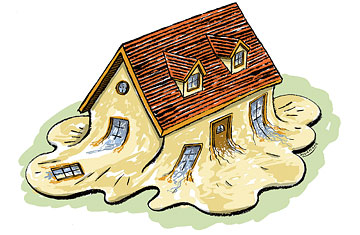
A year ago, there was barely an inkling of what was about to happen in the global economy and world financial markets. There were some early warning signs that all was not well in the subprime slice of the U.S. mortgage market. But as was the case in early 2000 at the end of the dotcom bubble, when few thought a crash in Internet stocks could cause widespread economic pain, problems within the subprime sector were widely judged to be of little consequence for the big picture. Most felt that the global boom of the preceding four years was very much intact.
Alas, another postbubble business cycle has turned. Annual global GDP growth, which averaged close to 5% from 2004 through 2007 — the strongest four consecutive years of growth since the early 1970s — now seems headed back down into the 3.5% range. While hardly a disaster, there can be no mistaking the abrupt downshift now at hand.
A CRIPPLED U.S. CONSUMER
The interplay between financial markets and the real economy holds the key to the global outlook over the next few years. Much depends upon how events unfold in three distinct phases of the adjustment process:
The credit crisis. Sparked by the subprime meltdown in the summer of 2007, an unprecedented financial contagion has broken out. It is more lethal than the cross-border contagion of the Asian crisis 10 years ago because, while toxic financial products were made in America, they were distributed to investors around the world — so the current affliction includes both cross-product and cross-border viruses. U.S. financial institutions generally have been quick to mark down the value of distressed securities, suggesting that the process of digesting all of the bad debt is about 65% complete. However, as underscored by the recent shakeouts at Lehman Bros. and Merrill Lynch and the rescue of AIG, a softening business climate could have further impacts on loans and earnings of shaky financial institutions.
The U.S. economy. The bubble-dependent U.S. is first in the line of fire in the aftermath of the bursting of credit and property bubbles. The main event is the capitulation of income-short, overextended American consumers. For over a decade, U.S. consumer-spending growth averaged close to 4% per year, taking consumption to a record 72% of GDP. As asset-dependent consumers, who are seeing marked declines in the value of their homes, now move to rebuild savings and prune outsized debt burdens, a multiyear slowdown in consumer demand is likely. Over the next two to three years, consumption growth could decline by half to around 2%, leaving the U.S. on the brink of recession, if not in one; any recovery will be weak. This process has just begun, suggesting adjustments in the U.S. economy are only about 20% complete.
The global economy. Growth is slowing throughout the world due to the important linkages between the U.S. consumer and the global economy. With shifts in export orders and shipping taking time to occur, this phase should unfold with a lag. Manufacturers in China and Japan are already pruning their shipments to U.S. customers. Ripple effects are now beginning to show up in Europe and will gather strength in the coming months. All in all, global adjustments are probably only about 10% complete; they should last well into 2009 and could spill over into 2010.